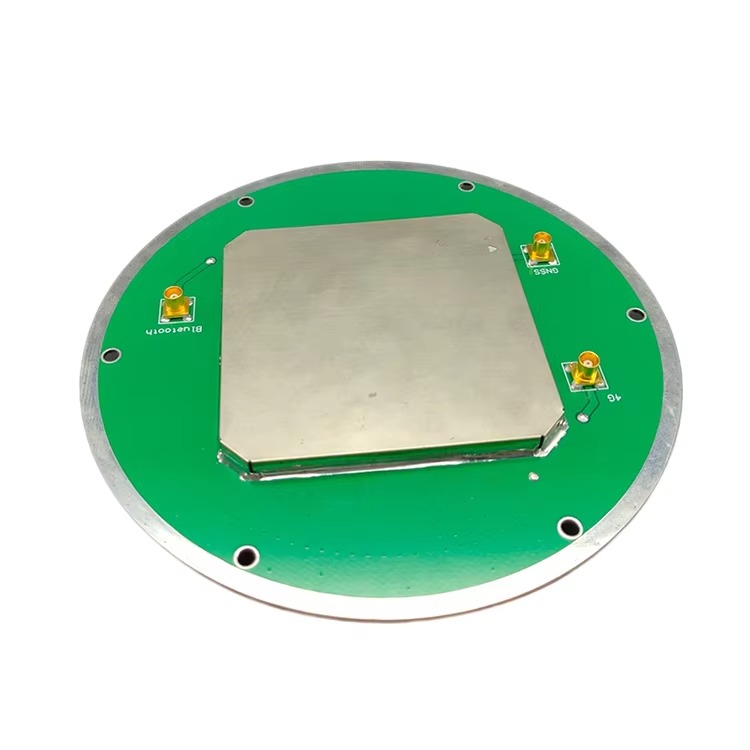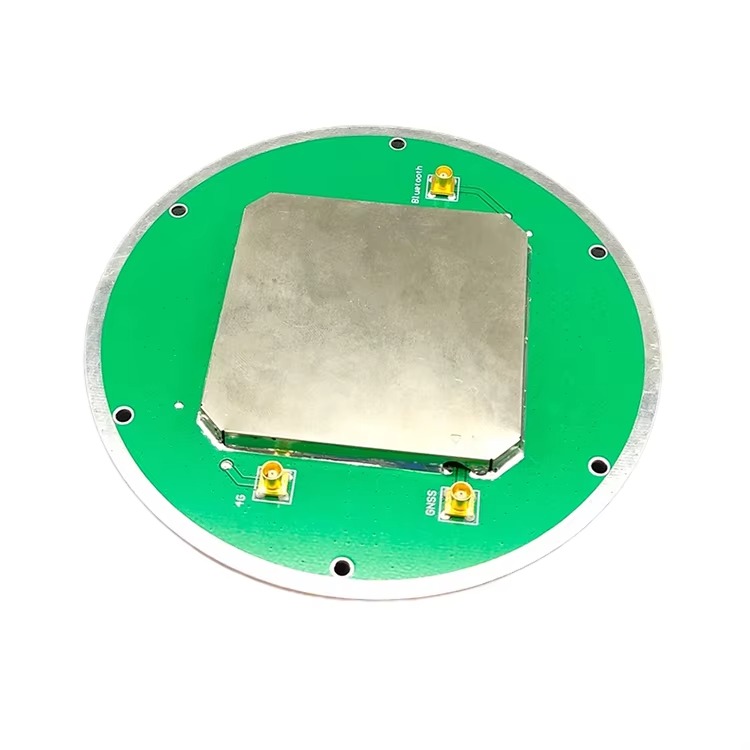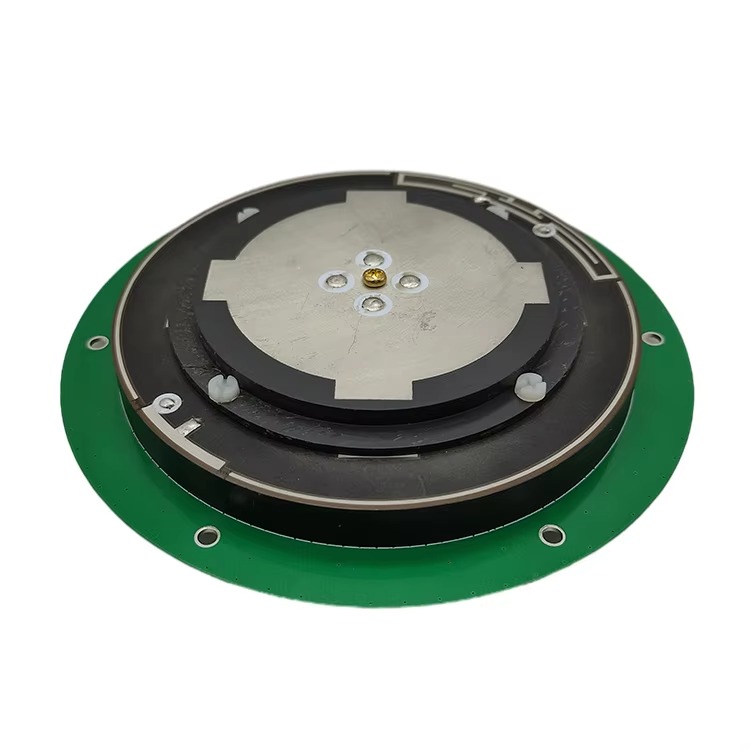Applications
Centimeter-level RTK surveying antennas are deployed in applications where precision is mission-critical:
Railway and Highway Construction: In railway alignment, these antennas ensure that tracks are laid with sub-centimeter precision, reducing wear on trains and improving safety. For highways, they guide paving machines to maintain exact slopes and elevations, ensuring proper water drainage and compliance with design specifications.
Precision Agriculture and Autonomous Farming: Farmers use these antennas to guide planters, ensuring seeds are spaced exactly 15–30 cm apart for optimal growth. Autonomous tractors equipped with centimeter-level RTK can till, plant, and harvest with minimal overlap, reducing fuel and input costs by 10–20%.
Structural Monitoring: Bridges, dams, and skyscrapers are monitored for tiny movements (1–5 mm per year) using centimeter-level RTK. These measurements detect early signs of structural stress, allowing for timely maintenance. For example, dams are monitored for horizontal and vertical shifts that could indicate impending failure.
Aerospace and Defense: In aerospace, these antennas are used to align aircraft components during manufacturing, ensuring that wings, engines, and avionics are positioned within 2 cm of design specifications. Defense applications include guiding precision weapons systems and mapping terrain for mission planning.
Mining and Quarrying: Mining operations use centimeter-level RTK to guide drills and blasting, ensuring that ore is extracted efficiently while minimizing waste. Draglines and shovels equipped with these antennas can load trucks with sub-centimeter accuracy, reducing spillage and improving productivity.
Future Trends
The evolution of centimeter-level RTK antennas is driven by advances in materials, connectivity, and computing:
AI-Enhanced Multipath Mitigation: Machine learning algorithms will analyze historical and real-time data to identify and filter multipath signals, reducing errors in urban and reflective environments. These algorithms will adapt to local conditions, improving accuracy in previously challenging locations.
Integration with 5G and LEO Satellites: 5G networks will enable faster, more reliable transmission of RTK corrections, extending NRTK coverage to remote areas. Low Earth Orbit (LEO) satellite constellations (e.g., Starlink, Amazon Kuiper) will provide global correction data, reducing dependence on ground-based base stations.
Miniaturization with Metamaterials: Metamaterials—artificial materials with engineered electromagnetic properties—will enable smaller, lighter antennas with the same performance as current models. This will expand their use in drones, wearable devices, and small autonomous systems.
Quantum-Enhanced Sensing: Research into quantum GNSS receivers could eventually lead to antennas that are immune to jamming and spoofing, while providing even higher accuracy. Quantum sensors would measure signal phases with unprecedented precision, potentially pushing accuracy into the millimeter range.
Energy Harvesting: Future antennas may integrate solar or RF energy harvesting to power the LNA, extending battery life in remote applications. This would be particularly valuable for long-term structural monitoring systems.
Conclusion
Centimeter-level RTK surveying antennas represent the pinnacle of precision in geospatial measurement, enabling applications that demand accuracy beyond the capabilities of standard GNSS systems. Their design—optimized for dual-frequency reception, ultra-low phase center variation, and robust signal processing—ensures that satellite signals are converted into actionable data with sub-centimeter precision. From railway alignment to structural monitoring, these antennas underpin critical infrastructure and industrial processes, ensuring safety, efficiency, and compliance with strict standards.
While challenges such as cost, environmental sensitivity, and base station dependence persist, ongoing advancements in AI, materials science, and connectivity are addressing these limitations. As 5G and LEO networks expand, and metamaterials enable miniaturization, centimeter-level RTK antennas will become more accessible and versatile, opening new applications in autonomous systems, precision manufacturing, and environmental monitoring.
In a world where infrastructure projects grow more complex and the demand for precision increases, centimeter-level RTK surveying antennas will remain essential tools. Their ability to transform satellite signals into centimeter-accurate positions not only drives efficiency and innovation but also ensures the safety and reliability of the systems and structures that shape our daily lives. As technology evolves, these antennas will continue to redefine the boundaries of what is possible in geospatial measurement, enabling a future where precision is the norm rather than the exception.




































































 Language
Language
 En
En Cn
Cn Korean
Korean

 Home >
Home > 







 18665803017 (Macro)
18665803017 (Macro)













